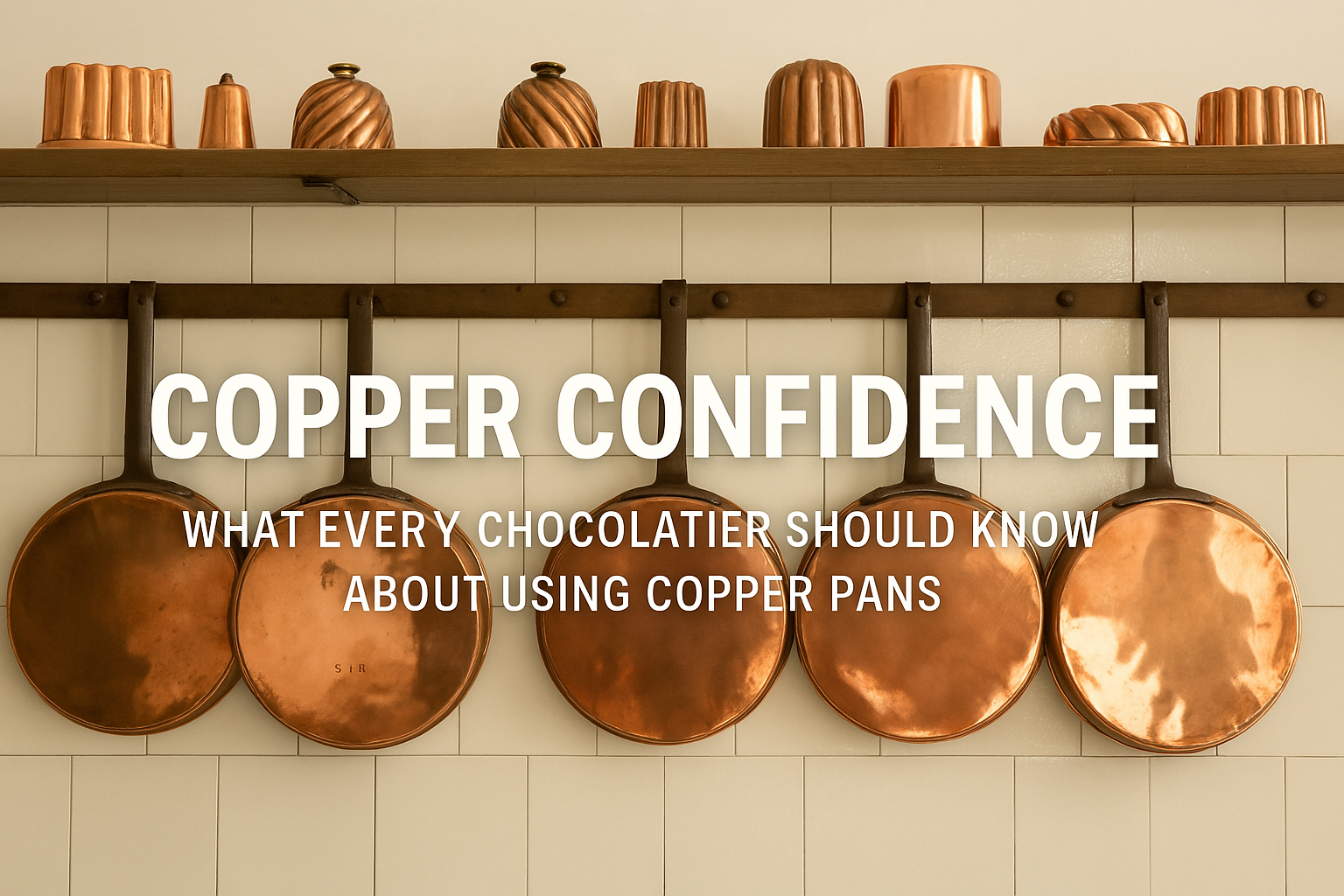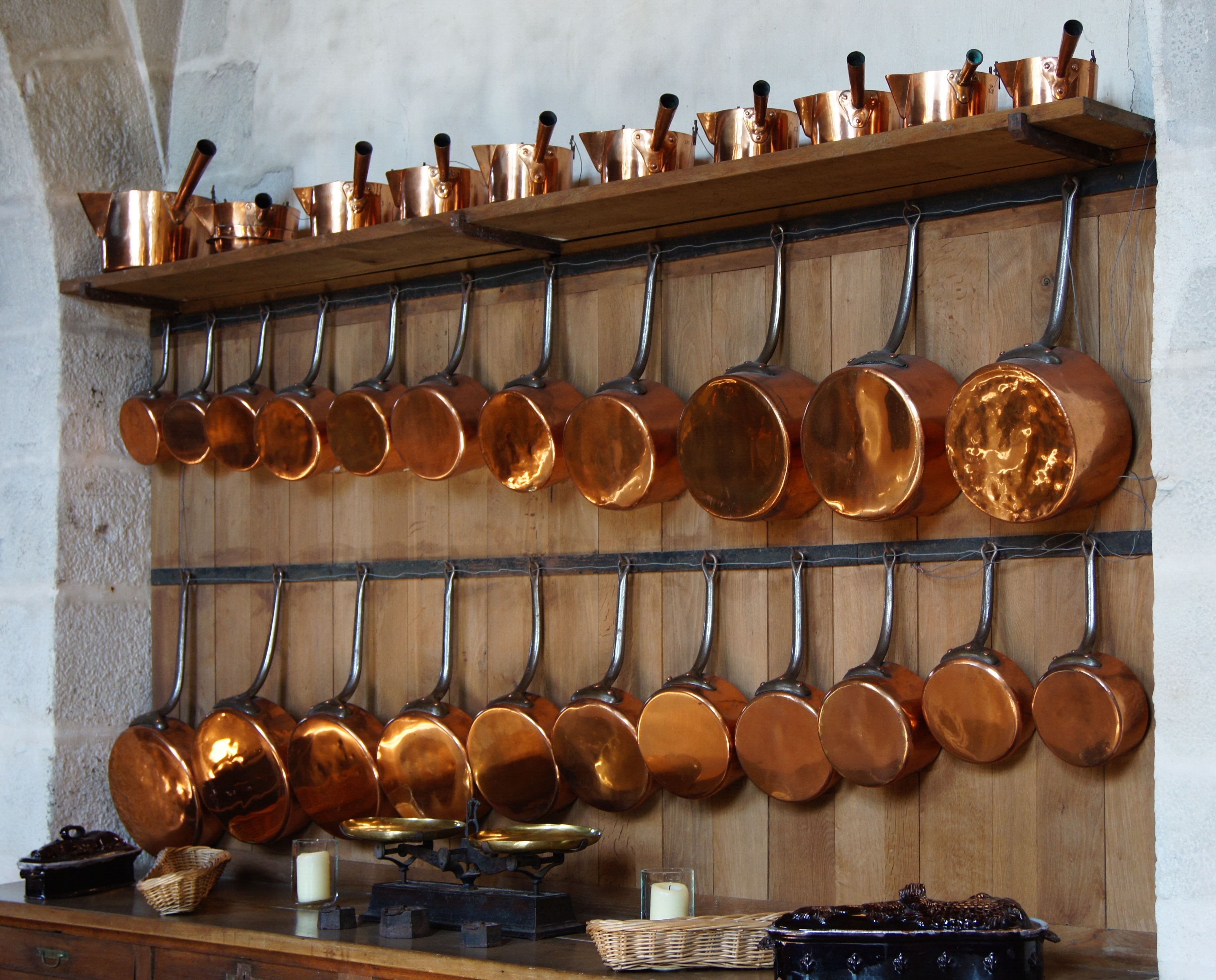Copper pans. They glint on the walls of every proper old-school kitchen and whisper of craftsmanship, tradition, and culinary precision.
But while they’re beautiful tools — and brilliant for sugar work or delicate sauces — using them the wrong way can land you in hot water (or worse, with toxic caramel).
In this post, I’m diving into the shiny world of copper cookware — its benefits, the risks, and the precautions every chocolatier, pastry chef, or enthusiastic home cook should take.
Why Copper Pans Are loved by Chefs
Let’s start with the good news. Copper is one of the most responsive metals in the kitchen. It heats up fast and cools down quickly — which gives you an incredible level of control. For chocolate and sugar work, where a few degrees can make or break a batch, this kind of precision is priceless.
At Coeur de Xocolat, I often use lined copper pans when making fondants, ganaches, or caramel — especially when I’m working with students or in demo kitchens where timing is everything.
A Copper Tribute to Escoffier
When I first committed myself to the teachings of Georges Auguste Escoffier, I marked the occasion with a proper gift to myself: a new set of copper pans.
It wasn’t just a splurge. It was a promise. A symbol of respect for the brigade system, for classical technique, and for the kind of culinary discipline that shaped my early years.
Back then, copper wasn’t about aesthetic — it was about control, mastery, and doing things the right way. And every time I reach for those pans, I still feel that same spark of purpose.
They’ve travelled with me through different kitchens, countries,— and they’ve earned every scuff dint and polish mark along the way.
But Here’s the Catch: Copper Can Be Toxic
Copper reacts with acidic foods — think vinegar, citrus, fruit purées — and that reaction can create verdigris, a greenish compound that’s toxic if ingested.
So, unless you like your lemon curd with a side of hospital visit, you need to be clued up.
7 Key Precautions for Using Copper Pans Safely
1. Only Use Unlined Copper for Sugar Work
If your pan is unlined, reserve it for neutral recipes — sugar, syrups, or egg whites. No acidity, no problem.
2. Stick to Lined Pans for Everyday Cooking
Most modern copper pans are lined with tin or stainless steel, which makes them safe for all sorts of jobs — from custards to ganaches.
3. Avoid High Heat on Tin-Lined Pans
Tin melts at about 232°C. So keep things gentle — no slamming the heat up full whack, especially on an empty pan.
4. Clean with Care
Avoid steel wool and abrasive cleaners. Go gentle, use a soft sponge, and if it’s looking dull, a dab of lemon and salt will bring the gleam back.
5. Don’t Store Food in Copper Pans
The longer food sits in copper, the more likely it is to react. Once you’re done, move it to another container.
6. Inspect Regularly
If the lining wears through and you see copper shining underneath — it’s time to have it retinned. A good pan can last generations if properly maintained.
7. Don’t Use Metal Utensils
Wooden or silicone spoons only, please. Metal will scratch the lining faster than a student raids a chocolate demo table.
Bonus: Why Copper Bowls Are Brilliant for Egg Whites
Now here’s a classic patisserie trick — whip your egg whites in an unlined copper bowl and they’ll become more stable. The copper ions help bond the proteins, which means fluffier peaks and fewer tears when folding into soufflés or sabayons.
I teach this technique in my masterclasses — and the look on people’s faces when they see the difference is priceless.
Final Thoughts: Copper Is a Tool, Not a Trophy
It’s easy to hang copper on your kitchen wall and think, “That’ll impress the neighbours.” But copper is meant to be used — thoughtfully, carefully, and with respect. If you treat it right, it’ll become your most trusted ally in the kitchen.
Whether you’re making single-origin chocolate truffles, honey caramel with Cridling Honey, or exploring new Easter egg moulds with molten centres, copper gives you the control you need for greatness.


